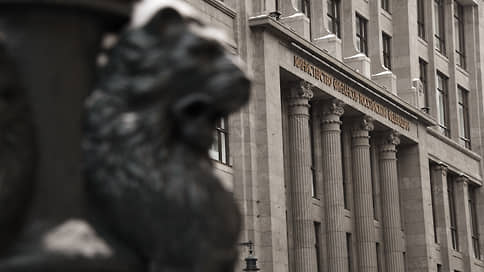NWF is undergoing structural changes – Kommersant FM
[ad_1]

The National Welfare Fund decreased by 1.5 trillion rubles. The results of the use of the National Welfare Fund in 2023 were summed up by the Ministry of Finance. The department reported that it sent almost 3 trillion rubles. from reserves to pay off the federal budget deficit. To do this, the government sold more than 230 tons of gold, 114 billion yuan and €0.5 billion, which were stored in the fund. Thus, the balance of European currency in his accounts was reset to zero. The volume of the National Welfare Fund at the end of December amounted to 12 trillion rubles. or 8% of GDP, the liquid part approached the mark of 5 trillion rubles.
How effectively was the fund managed in 2023? “Kommersant FM” discussed this issue with the director of the analytical department of the investment company “Region” Valery Weisberg: “From the Central Bank’s plans for mirroring the operations of the National Welfare Fund, it was clear that 2.9 trillion rubles. spent to finance the budget deficit, this is permitted by the budget law and the Budget Code of the Russian Federation. In December, a fairly large amount of funds, so to speak, was invested in various sectors of the economy in a fairly diverse manner.
In general, the design of the NWF looks quite stable, given that not all of the additional oil and gas revenues that were received last year have yet entered the fund.
So, accordingly, they will be added in January. So, most likely, by the end of January we will even see some additional growth in the National Welfare Fund.”
The main trend in reserve management in recent years has been the consistent abandonment of Western currencies. Back in 2021, the Ministry of Finance sold all dollars from the accounts of the National Welfare Fund, and in 2022 it reset the balances in pounds sterling and Japanese yens. Last year, euro assets were excluded from the fund. Its current structure involves investing exclusively in gold, yuan and rubles.
Another option is investing in bonds and shares of Russian issuers, for example, Russian Railways, NLK-Finance and Dom. RF”. Over the past year, the volume of such transactions has increased. But this strategy is unlikely to lead to replenishment of the National Welfare Fund, believes Sofya Donets, economist at Renaissance Capital for Russia and the CIS:
“It is clear that recently the share of the National Welfare Fund placed in domestic assets has become increasingly larger. We must understand that what is invested in the Russian economy is largely synonymous with budget expenditures, is illiquid and, accordingly, does not perform the same functions as the liquid exchange rate part of savings.
The main thing we can look at that is a long-term important trend is that the fund continues to shrink. Additional oil and gas revenues were credited to the National Welfare Fund in the second half of the year, but at the same time funds from it were spent.
If we assume, for example, that this year there will not be the same additional revenues, then in this case the National Welfare Fund will not only not be replenished, but will continue to be spent. After all, the anti-crisis premium remains, which this year will still amount to more than 1 trillion rubles. And, of course, we understand that there are certain risks and increases in these costs.
When you have 5 trillion rubles. and you just spent 3 trillion rubles over the previous year, then you need to understand that the margin of safety that the National Welfare Fund stores in itself not only does not cover the goals of financial stability in the long term (what it was created for), but also creates quite a dense outline for planning even for the next three years. In order for us to return to savings, we need a significant tightening of expenditures or an increase in the tax burden, which, however, is already growing.”
According to the Ministry of Finance, Russia will receive almost 2 trillion rubles this year. additional oil and gas revenues. With these funds, the government plans to purchase gold and yuan from the National Welfare Fund. At the same time, about 1.5 trillion rubles. They expect to use the reserves to cover the budget deficit.
Everything is clear with us – Telegram channel “Kommersant FM”.
[ad_2]
Source link






